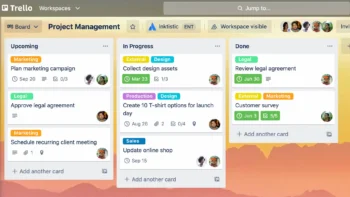Running a medical practice involves juggling countless responsibilities—managing staff, ensuring patient satisfaction, maintaining compliance, and keeping operations running smoothly. Amid all this, handling billing and the revenue cycle can easily become overwhelming, opening the door to errors and delays. If medical billing is taking up too much time and energy, it might be … [Read more...] about Why Outsourcing Medical Billing Might Be the Best Decision You’ll Make
Purchasing and leasing
What Is Medical Inventory Management Software—and Why Should Your Practice Use It?
If you've ever run out of exam gloves mid-shift or spent an hour searching for a backordered item, you already know the value of staying on top of medical supplies. That’s where medical inventory management software comes in. It’s a digital tool that helps medical offices track, manage, and reorder supplies more efficiently—and it can save your team a lot of time, money, and … [Read more...] about What Is Medical Inventory Management Software—and Why Should Your Practice Use It?
Make Your Website Work on the Go: Why a Mobile-Friendly Site Matters
Let’s face it—most of your patients aren’t sitting at a desktop computer when they search for your office, look up your hours, or try to book an appointment. They’re on their phones. If your practice’s website isn’t mobile-friendly, you could be frustrating current patients and turning away potential new ones without even realizing it. Why Mobile Matters A mobile-friendly … [Read more...] about Make Your Website Work on the Go: Why a Mobile-Friendly Site Matters
What Is Trello—And How Can It Help You Run Your Medical Office More Smoothly?
When you’re managing a busy medical office, you need more than sticky notes and mental checklists to keep everything organized. Enter Trello and similar project management tools. If you’ve heard the name but never had time to dig in, here’s a quick rundown of what Trello is—and why it could become one of your favorite office tools. What Is Trello? Trello is a digital task … [Read more...] about What Is Trello—And How Can It Help You Run Your Medical Office More Smoothly?
Keep those payables paid with efficient procedures
Managing your medical office's financial obligations effectively not only ensures the smooth operation of your practice but also upholds its financial integrity. Here are the steps to establish efficient accounts payable procedures that help maintain financial stability, ensure compliance, and build strong vendor relationships. 1. Develop a Clear Accounts Payable Policy: … [Read more...] about Keep those payables paid with efficient procedures
7 terms to include in your patient debt collection agency services contract
Outsourcing patient collections enables medical practices to generate needed cash flow and concentrate on clinical operations. That, at least, is the theory. But the strategy does not always work. One of the key factors of success is the actual services contract the medical practice signs with the agency. Many a medical practice has seen the anticipated benefits of outsourcing … [Read more...] about 7 terms to include in your patient debt collection agency services contract
How to Create a Calm, Focused Environment in a Small Office
It only takes one loud phone call or a string of interruptions to derail productivity in a small office. When space is limited and everyone works within earshot of one another, creating a calm and focused environment isn’t a luxury—it’s a necessity. Picture this: you’re trying to finalize a report while two coworkers chat about weekend plans right behind you, … [Read more...] about How to Create a Calm, Focused Environment in a Small Office
How to pick the right medical billing software
Medical billing software is a vital component of healthcare administration. It automates the billing process, reduces errors, ensures compliance with regulatory standards, and facilitates quicker reimbursement from insurance companies and patients. The right software can save your practice time and money, allowing your staff to focus more on patient care. Key Considerations … [Read more...] about How to pick the right medical billing software
How to negotiate the best possible purchasing agreements
Smart purchasing decisions help a medical practice run more efficiently, improve the practice's bottom line, and make your job easier. But what should you include in purchasing contracts and lease agreements? As important, how do you negotiate the best possible deal for the practice? Determining requirements Before you solicit bids or attempt to negotiate a contract, … [Read more...] about How to negotiate the best possible purchasing agreements
Best practices for managing medical billing and coding
Managing medical billing and coding can be quite the juggling act, but getting it right is crucial for the financial health of your practice and ensuring everything runs smoothly. Here are some best practices to help you streamline your billing and coding processes, complete with examples to show how it all works. First off, hire and train the right staff. … [Read more...] about Best practices for managing medical billing and coding









